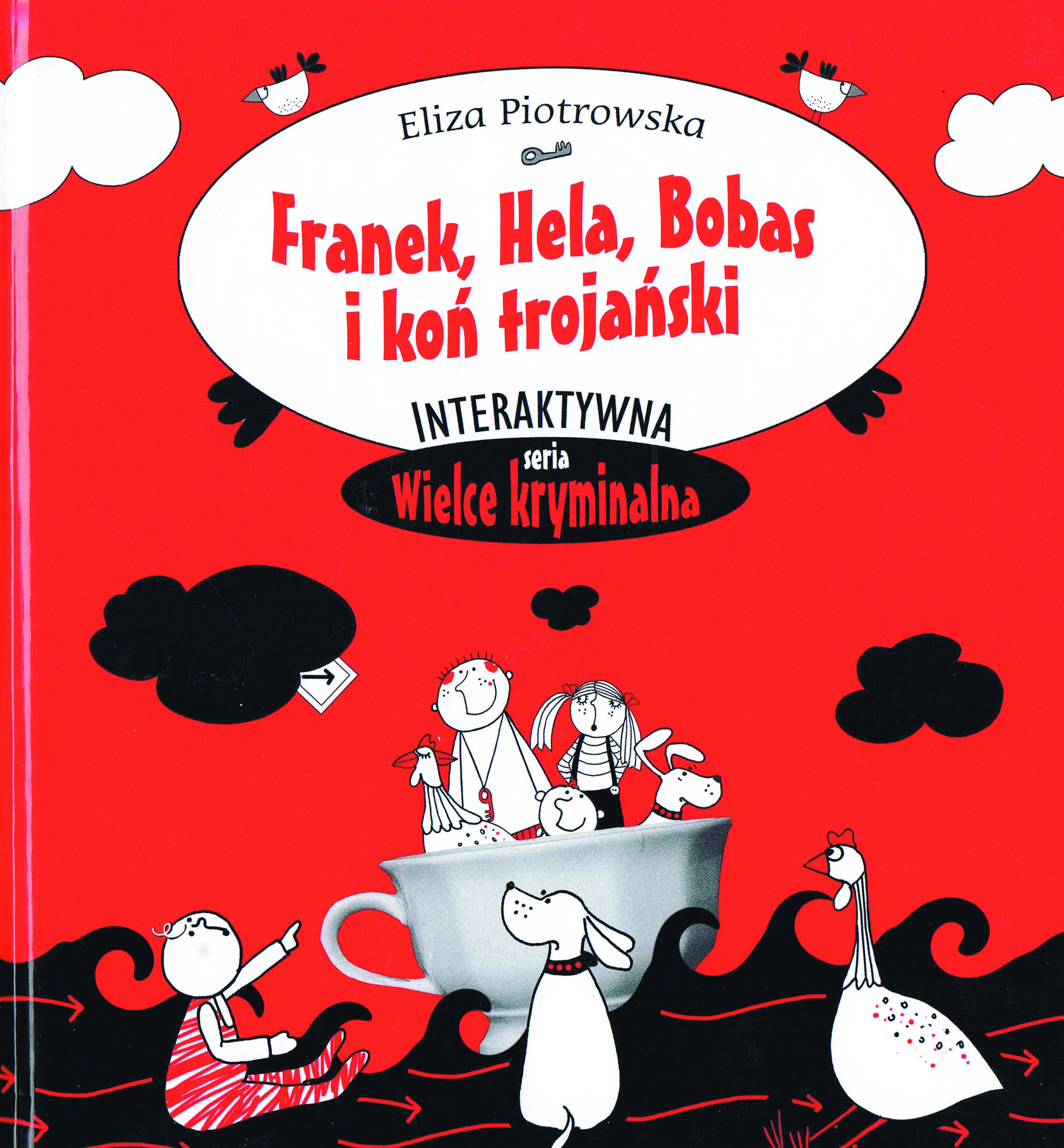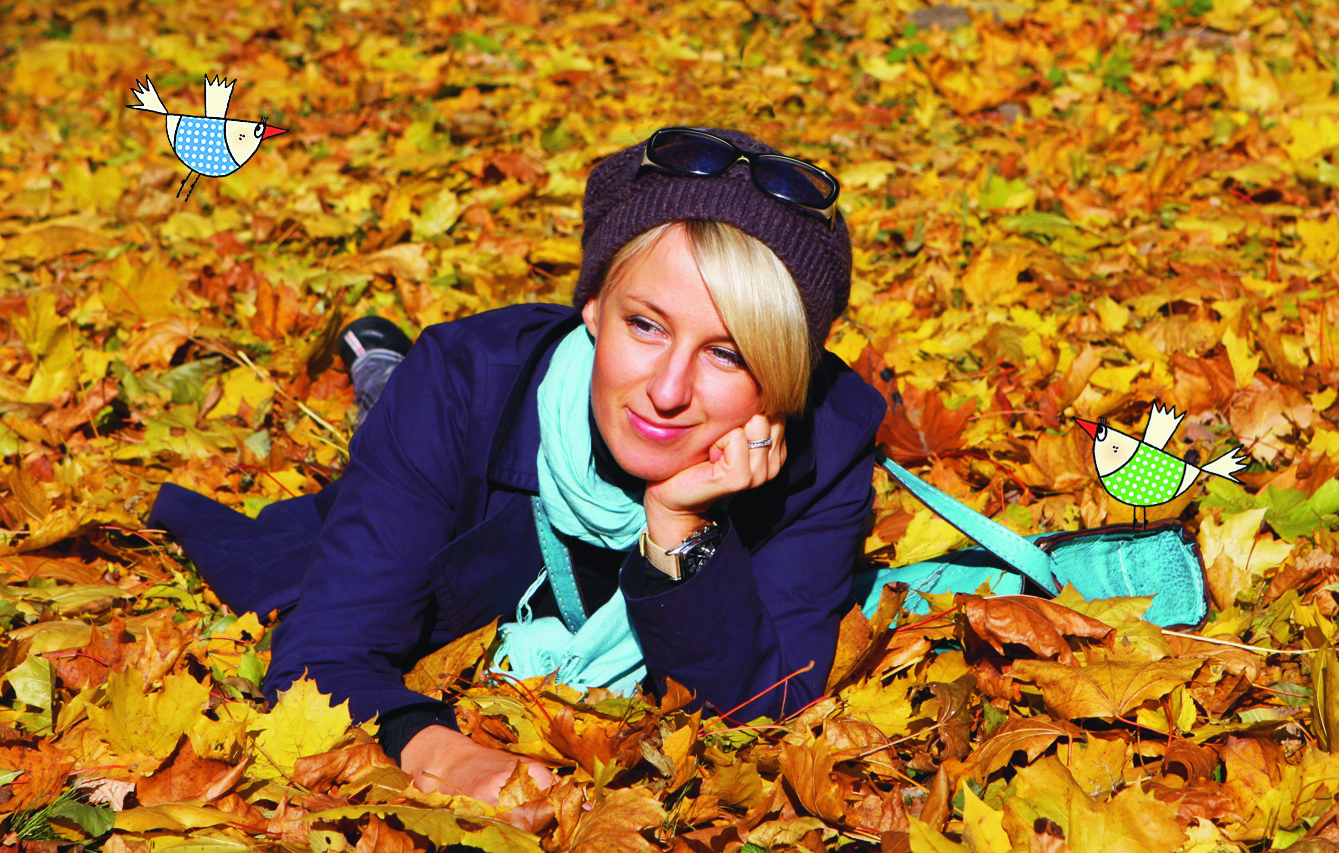Title of the work
Country of the First Edition
Country/countries of popularity
Original Language
First Edition Date
First Edition Details
Eliza Piotrowska, Franek, Hela, Bobas i koń trojański. Warszawa: Wydawnictwo Wilga, 2008, 72 pp.
ISBN
Genre
Didactic fiction
Illustrated works
Novellas
Toy and movable books
Target Audience
Children
Cover

Courtesy of the Author.
Author of the Entry:
Summary: Ewa Wziętek, University of Warsaw, ewawzietek@student.uw.edu.pl
Analysis: Karolina Anna Kulpa, University of Warsaw, k.kulpa@al.uw.edu.pl
Peer-reviewer of the Entry:
Katarzyna Marciniak, University of Warsaw, kamar@al.uw.edu.pl
Elżbieta Olechowska, University of Warsaw, elzbieta.olechowska@gmail.com

Photograph courtesy of the Author.
Eliza Piotrowska
, b. 1976
(Author, Illustrator)
Art historian and critic. Graduated from Adam Mickiewicz University in Poznań and Università La Sapienza in Rome; member of the circle of young poets organized by the famous Polish author for children Danuta Wawiłow. Eliza Piotrowska wrote many prize winning books for children; she is co-founder of the project called Children’s Museum Academy, contributor to Ryms – a quarterly dedicated to children’s literature – and to the now defunct famous Polish magazine for kids – Miś.
Sources:
Official website (accessed: June 26, 2018).
Profile at the Ryms website (accessed: June 26, 2018).
Bio prepared by Ewa Wziętek, University of Warsaw, ewawzietek@student.uw.edu.pl
Translation
Czech: Franta, Helča, Mrňous a trojský kůň, trans. Pavel Weigel, Praha: Albatros, 2012.
Summary
Based on: Katarzyna Marciniak, Elżbieta Olechowska, Joanna Kłos, Michał Kucharski (eds.), Polish Literature for Children & Young Adults Inspired by Classical Antiquity: A Catalogue, Faculty of “Artes Liberales”, Warsaw: University of Warsaw, 2013, 444 pp.
Everything starts in the living room when parents realise that two of their three kids, Baby and Helen with their dog, disappeared when they got under the cupboard. Both mother and father are too big to follow their children there. Frank, the oldest and the most reasonable of the children launches a rescue. He is armed only with the Greek and Roman mythology. He meets crazy and evil characters like Mistrz Brud As [Master Dirt Ace], Doktor Potwór [Doctor Monster], Pożeracze Liter [Letter Eaters] and Paris – the hero and the cause of the Trojan War. Paris falls in love with Helen. Helen forgets about her family and has fun with her handsome boyfriend. Meanwhile, Frank and Baby receive a message from their parents. They find out that the world they have travelled through and the people they have met are infected with a virus called “Trojan Horse,” like the ruse of the mythical Odysseus. Only strong family bonds and truth can cure this “disease.” Helen is the first to discover the remedy. Then, kids spread these ideas among Letter Eaters, Doctor Monster, Master Dirt Ace (now called Cool Ace), all Trojan soldiers and citizens. Finally, the truth reaches Paris. He realizes that beauty and successes in war are not important.
Analysis
The author, in a very insightful and captivating manner, wove mythological motifs into the novel’s plot. Some of them are well hidden between the lines so that the young reader needs to find the correct person. The book’s artwork also attracts attention, due to its simplicity: it is based on four colours only (black, white, red and grey) and resembles children’s drawings.
The contact with the mythological world starts already at the beginning of the adventure. Franek, and then his siblings and his dog, travel across different dimensions and it is the reader who decides where they would reappear by moving from chosen page to page. The reader has a map in the form of a maze and has to decide where to go to rescue Hela and Bobas and to bring the children back home. The maze associates with the mythological Labyrinth designed by Daedalus for the Minotaur. Like Theseus who found the monster using “Ariadne's thread” (Apollod., Bibl. III 8 – 11; Plut. Thes. 15-19), readers have several mathematical riddles to solve and a few hints to uncover. They could read them using a mirror or find clues in the graphics or highlighted in the text.
The main problem that Franek, Hela and Bobas have to solve is to disinfect the land called There which is infected by a type of virus. They are assisted by a guinea hen called Prawda [Truth]. It’s an obvious reference to harmful malware, but first of all, it alludes to a mythological object mentioned in Homer’s Odyssey (Hom. Od. IV 265). The wooden horse created by the Greeks during the Trojan War was Odysseus idea; it helped the Greeks win the war after almost ten years of inconclusive conflict and it became a symbol of sophisticated deception. In Piotrowska’s book, the title Trojan Horse is a disease very difficult to cure and making people immoral and heartless. The reader is familiar with the story of the Trojan War when Franek visits Troy, where his sister Helena has been recognized as the famous wife of Menelaus. We also meet Paris, the man who brought Helena from Sparta, who is Franek’s main antagonist and creator of the Trojan horse. In the book, he convinces Helena that she is the most beautiful woman in the world and organizes a great party in her honour as his beloved. But the girl realizes that beauty is not the most important quality in the world, as opposed to such values as friendship and family. The good words and deeds are like the antivirus in There land and they launch a chain reaction transforming people who live there. The children discover that Paris created the Trojan horse because he didn’t believe that something good could ever be found in people. He explains his behaviour as a resulting from a difficult childhood. There is a noticeable similarity between Piotrowska’s Paris and the mythological character. The former complains about his parent’s behaviour because they didn’t hug him or take him on their lap. And the latter was abandoned when his parents learned about the prophecy predicting that the infant would one day destroy Troy (Apollod., Bibl. III 12.5). The story of Paris’ childhood presented in the novel could initiate a conversation with the child reader about the importance of showing feelings in the family. It could be also a starting point for presenting the original version of the tragic Trojan myth.
Another reference to Greek mythology can be found in one of the illustrations of the workshop of Master Dirt Ace (pp. 21–23). The scene in the picture and the title (Upadek i kara [Fall and Punishment] is a play on words in Polish) associate with a piece of art titled in Polish Upadek Ikara [Fall of Icarus] or Pejzaż z upadkiem Ikara [Landscape with the Fall of Icarus] attributed to Peter Bruegel the Elder. Franek recognises the picture and tells the story of Daedalus and Icarus.


